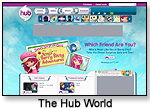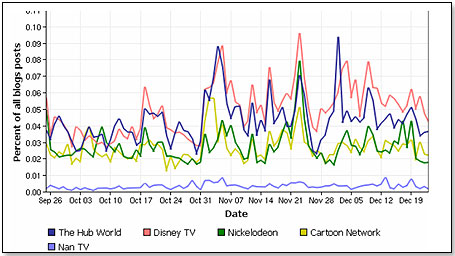
April 18, 2024


 Early this year, Hasbro took another step towards taking control of all contact points between the company and its consumers. They are already the second largest toy manufacturer and extremely well represented at the large retailers where they have very prominent display positions and first-class on-shelf presentation. However, it has been their long-held goal to establish direct contact with consumers on the broadest possible level and to not depend on stores as the sole intermediary in the company’s dialogue with its audience.
Early this year, Hasbro took another step towards taking control of all contact points between the company and its consumers. They are already the second largest toy manufacturer and extremely well represented at the large retailers where they have very prominent display positions and first-class on-shelf presentation. However, it has been their long-held goal to establish direct contact with consumers on the broadest possible level and to not depend on stores as the sole intermediary in the company’s dialogue with its audience.| Category | Average daily viewers 11/29 – 12/3 2010 |
Average daily viewers 11/22 -11/26/2010 |
Percentage Increase |
| Households | 191000 | 56000 | 241% |
| Persons 2 years + | 292000 | 75000 | 289% |
| Kids 2 -11 years | 101000 | 33000 | 206% |
| Boys 2 – 11 | 81000 | 20000 | 293% |
| Adults 18 -49 years | 138000 | 78000 | 77% |
| Women 18 – 49 years | 40000 | 34000 | 18% |
| Category | Saturday Viewers 12/4/2010 |
Saturday Viewers 11/27/2010 |
Percentage Increase |
| Households | 194000 | 95000 | 104 % |
| Persons 2 years + | 367000 | 169000 | 117% |
| Kids 2 -11 years | 132000 | 73000 | 81% |
| Adults 18 -49 years | 138000 | 78000 | 77% |
| Women 18 – 49 years | 40000 | 34000 | 18% |
| Nickelodeon | 1220000 |
| Disney | 899000 |
| Cartoon Network =- TBS | 481000 |
| Nick Junior | 380000 |
| NAN | 333000 |
| ADSM [Adult Swim] - TBS | 198000 |
| Disney XD | 163000 |
| Nicktoons | 91000 |
| ESPN [Sports Channel] | 59000 |
| Sprout [PBS] | 53000 |


Copyright © 2024 TDmonthly®, a division of TOYDIRECTORY.com®,
Inc.